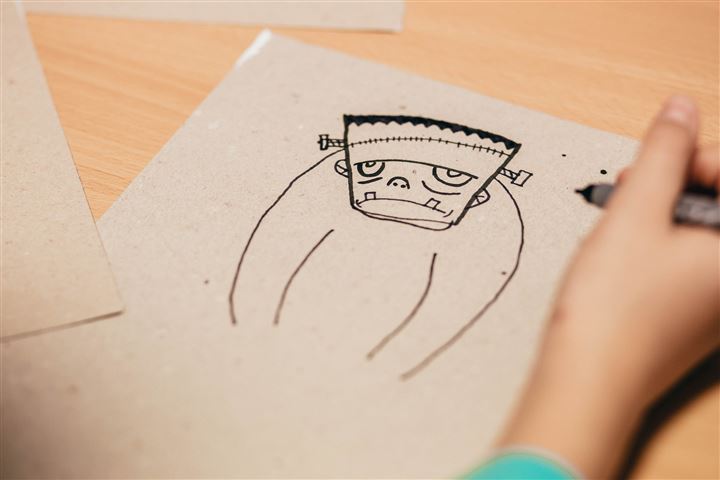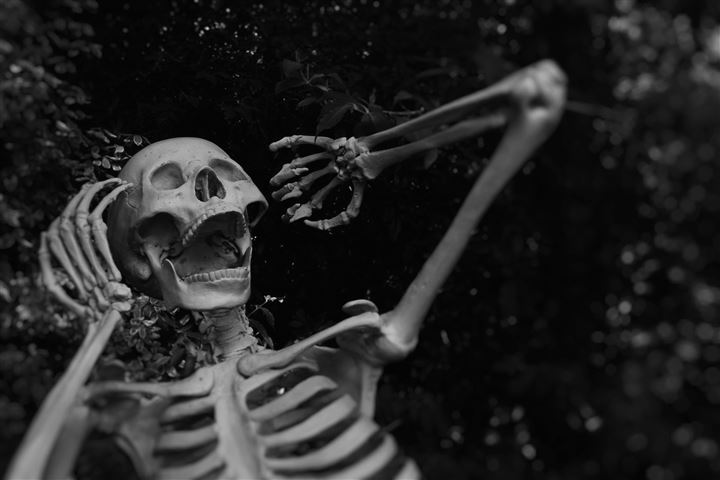
Source: Unsplash
How often do we struggle with self-identity problems? Most people question their sense of self due to internal and external factors. They include significant changes, stressors, or advancement from a certain age. Affected people feel worse about themselves and spiral toward unhealthy patterns and behaviors. In Mary Shelley’s novel Frankenstein, she explores the dangers in the pursuit of knowledge and advancement in technology. More importantly, Mary Shelley investigated the human identity problem and individual character development.
Frankenstein was a creature between non-human and human beings. He learned vital skills to live in the human world, but people often rejected his identity. Even his creator, Dr. Victor Frankenstein, refused to refer to him as human but called him “the monster” throughout the novel. Isn’t your family supposed to catch you when you fall and stand you back up? This article explores the self-identity problem in Frankenstein by Mary Shelley, including an analysis of his struggles, actions, and motivations.
Society's Rejection and the Struggle for Self-Identity in Frankenstein
Frankenstein tells the story of Victor Frankenstein, a student of natural science. He created an artificial man from corpses and brought him to life. But unlike other men, Frankenstein was 8 feet (2.4 meters) tall and proportionally large. He had a hideous appearance and yellow eyes. The blood vessels and muscles also showed underneath his yellow shin. Victor became so repulsed by his creation's appearance and fled. In his absence, the creature, fearing abandonment, left the castle.
Frankenstein was a product of a gruesome failed experiment. The character has been the subject of various books, movies, and television shows. College professors assign essays on Frankenstein by Mary Shelley to help students understand the characters. Their analysis helps them draw a moral related to our society. You can also use many Frankenstein essay examples to draft your Frankenstein argumentative essay.
With no name or friends, Mary's Frankenstein wandered through his society for public approval. He tried to assume a new personality through friendship and marriage, but both failed miserably.
Victor Frankenstein's Struggle with Self-Identity: An Analysis of his Motivations and Actions

Source: Unsplash
According to Mary, Frankenstein spends the first few days living alone in the wilderness. He tried to approach a few people but soon discovered they panicked, hated, and hid from him due to his appearance and social stereotypes. As a result, Frankenstein resorted to living in an abandoned structure. The following factors motivated him to seek an identity.
The need for friendship
Frankenstein's abandoned structure connects to a cottage where the Felix family lived. But since everyone escapes when they see him, the monster kept his distance and observed from afar. Over time, he started noting the family members and their daily routines. His thirst for friendship pushed him to provide firewood silently, learn their language by listening, clear the snowy paths, and perform other acts of kindness.
After weeks of waiting, Frankenstein walked out of his hole and attempted to introduce himself. He approached the old man believing he wouldn't fear him since he could not see. But the blind man was horrified after touching his hands. The man’s son attacked the creature until he fled the house, and the man and his children left their home out of terror that he would return. This treatment enraged him, and he gave up hope of being accepted by humans.
On his journey from the cottage, his attempt to rescue a drowning child earned him a bullet in the shoulder. He then swore to take revenge against humans and track down his creator.
The need for a relationship
Frankenstein located his creator and demanded he create a female companion like himself. He argued that, unlike humans, a female monster like himself won’t reject him since they are the same species. His identity problem pushed him to find comfort, love, and support in his bride. In the end, Victor rips the unfinished bride’s body and declares Frankenstein’s identity journey a failure.
How the Monster's Search for Identity Leads to Tragedy in Mary Shelley's Frankenstein
In Mary's book, Frankenstein lost himself in his search for self-identity. Instead of discovering himself, the monster succumbed to the world’s stereotypes, which led to a tragedy. Victor went back to England after abandoning Frankenstein in the castle. The creation tracked his creator via his journal, murdered his brother, William, and framed his nanny.
After approaching him to create a bride, he threatened his creator with death if he did not do his bidding. But Victor feared the female would become eviler or hate Frankenstein. Not only this, but he worried they would breed a race that could plague the world. As a result, he tore apart the unfinished female creature and ran away.
Frankenstein strangled Victor's friend, Clerval, and Victor was arrested for the murder. He also strangled His fiancé, Elizabeth, and his father died a few days later. Victor searched for Frankenstein out of spite and revenge all over Europe, Russia, the Arctic Ocean, and the North Pole and died from hypothermia and exhaustion. Victor’s death did not bring the monster peace but another problem. Instead, his crimes made him more miserable, and he vowed to kill himself so no one would know he existed. He drifted away on an ice raft from painful societal rejection, and true to his words, no one saw him again.
Conclusion
Anxiety about the meaning of life is part of psychological development and is inherently human, as revealed by Mary Shelley. Frankenstein experienced an identity problem complicated by his horrible appearance, changes in self-cognition, and self-identity transition. Whenever Frankenstein showed his real image, people stoned and rejected him. To be fair, the cadaver was a problem, as it reminded people of death and the disgusting smell. He was also larger than most people, and the biological panic prevented human acceptance.
One vital detail Mary Shelley included was that Frankenstein had a human heart, although no one would understand. Despite learning literature to communicate and offer help, society rejected his friendly voice due to stereotypes and anthropocentrism. As a result, Mary's monster went through phases of identity transition into a complete beast by abandoning reason. The collective external pressure ultimately led to the killing of several people for revenge. So, who is the real monster in Frankenstein essay? The monster or humans?